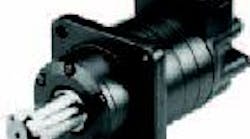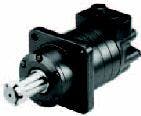TMKW, TMTW, and TMVW hightorque, wheel-mount orbital motors are designed for mobile equipment. TMKW maintains a consistent high efficiency throughout machine operation, continuous and intermittent pressure being 250 bar and 325 bar, respectively. Displacements range from 160 to 470 cc. TMTW motors offer continuous pressure of 250 bar and intermittent pressure of 350 bar. Available in displacements from 250 to 630 cc. The largest frame TMVW is rated at the same pressure levels as the TMTW, with displacement ranges from 400 to 800 cc.
Sauer-Danfoss
(515) 956-5750
www.sauer-danfoss.com


